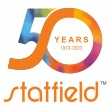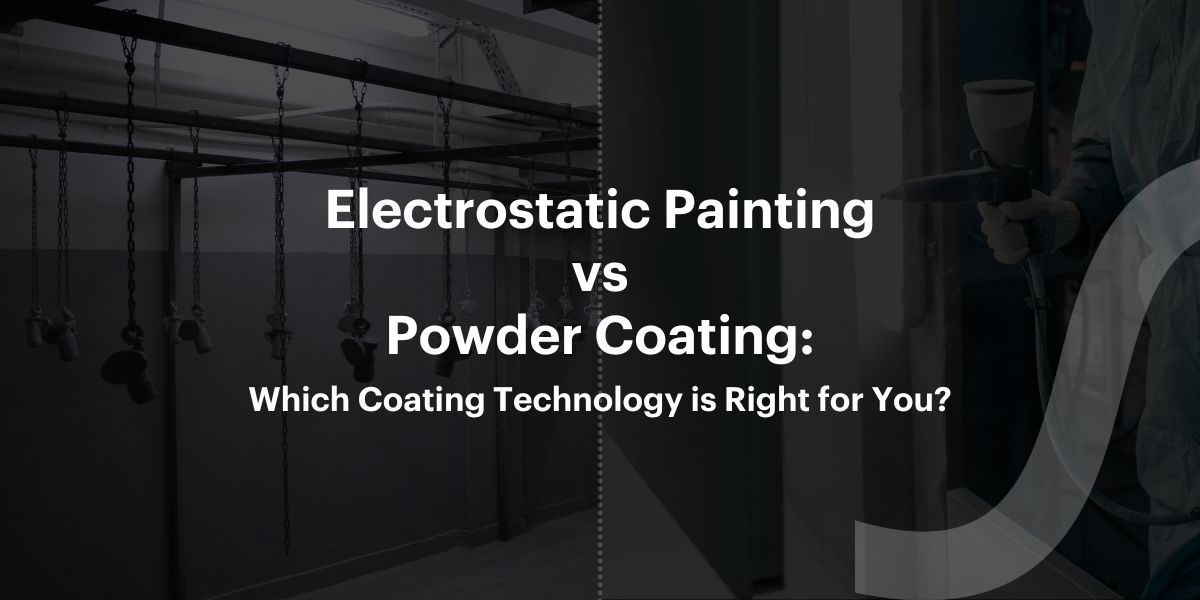A Deep-Dive into Surface Finishing Technologies by Statfield
In industrial and commercial finishing applications, choosing the right coating method is critical for durability, aesthetic appeal and operational efficiency. Among the most popular methods are electrostatic painting vs powder coating. leveraging the power of electrostatic attraction for precision application.
As one of the trusted manufacturers of powder coating machines, Statfield provides insight into the advantages and differences between these technologies to help you make an informed decision for your finishing needs.
What is Electrostatic Painting?
Electrostatic painting involves spraying solvent-based liquid paint using an electrostatic spray gun. The paint particles are electrically charged and naturally attracted to a grounded metal object, ensuring even coverage and minimal overspray.
| Key Features | Advantages | Limitations |
| Material Used: Liquid paint (often solvent-based) | Faster setup and coating time | Less durable compared to powder coating |
| Curing: No baking required; air-dried | Cost-effective for large surfaces | Requires careful handling to avoid uneven application |
| Application: Suitable for on-site painting or touch-ups | Ideal for repainting and field applications | Paints often contain VOCs (Volatile Organic Compounds), impacting environmental safety |
| Best For: Large, complex objects or structures that can’t be moved easily | Minimal paint waste due to electrostatic attraction |
What is Powder Coating?
Powder coating uses an electrostatically charged dry powder typically a polymer-based resin sprayed onto a grounded object. After coating, the component is placed in an oven and heated until the powder melts and fuses into a durable, smooth finish.
| Key Features | Advantages | Limitations |
| Material Used: Dry powder resin | Superior durability and wear resistance | Not feasible for heat-sensitive or large immovable items |
| Curing: Requires baking at high temperatures | Smooth, even finish with thicker coating capability | Requires powder coating equipment and curing oven |
| Application: In-shop, not suitable for on-site work | Highly resistant to corrosion, chipping, and fading | Initial setup cost is higher than electrostatic painting |
| Best For: High-performance industrial parts and components | Environmentally friendly (zero VOCs, minimal waste) |
Electrostatic Painting vs Powder Coating Comparison
| Feature | Electrostatic Painting | Powder Coating |
| Material | Liquid solvent-based paint | Dry powder resin |
| Curing Process | Air-dried (no baking) | Oven-baked (heat cured) |
| Durability | Moderate | High (impact & corrosion resistant) |
| Application | On-site, large objects | In-shop, small to medium parts |
| Eco-Friendliness | Low (VOCs present) | High (zero VOCs) |
| Finish | May vary | Smooth, thick, consistent |
| Cost | Lower initial cost | Higher upfront cost but long-term value |
Environmental Impact: Powder Coating Takes the Lead
Electrostatic techniques are known for efficient material transfer, but when it comes to sustainability, powder coating is the clear winner. It produces zero harmful emissions, contains no solvents, and generates little to no waste, aligning with today’s push toward eco-conscious manufacturing.
In contrast, electrostatic painting, while efficient, often involves paints that release VOCs, posing environmental and health concerns.
Statfield, Your Partner in Powder Coating Excellence
At Statfield, we specialize in high-performance powder coating machines engineered for industrial use. Our solutions are designed to support:
- Automotive components
- Metal furniture and enclosures
- Industrial machinery
- Electrical cabinets
- Consumer appliances
Whether you need a manual powder coating gun or a fully automated powder coating plant, Statfield offers scalable and energy-efficient machines tailored to your production goals.
Choosing the Right Technology
When selecting between electrostatic painting vs powder coating, consider the following:
- Durability requirements
- Application environment (on-site or in-plant)
- Material type and size
- Sustainability goals
- Budget and equipment availability
Powder coating is ideal for industrial parts that need long-term protection and aesthetic appeal. Electrostatic painting is better suited for quick touch-ups, repainting, and hard-to-move equipment.



